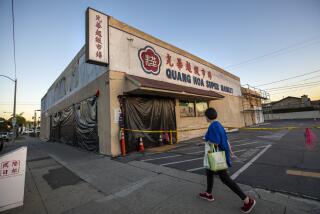How Valley Boulevard is weathering the pandemic
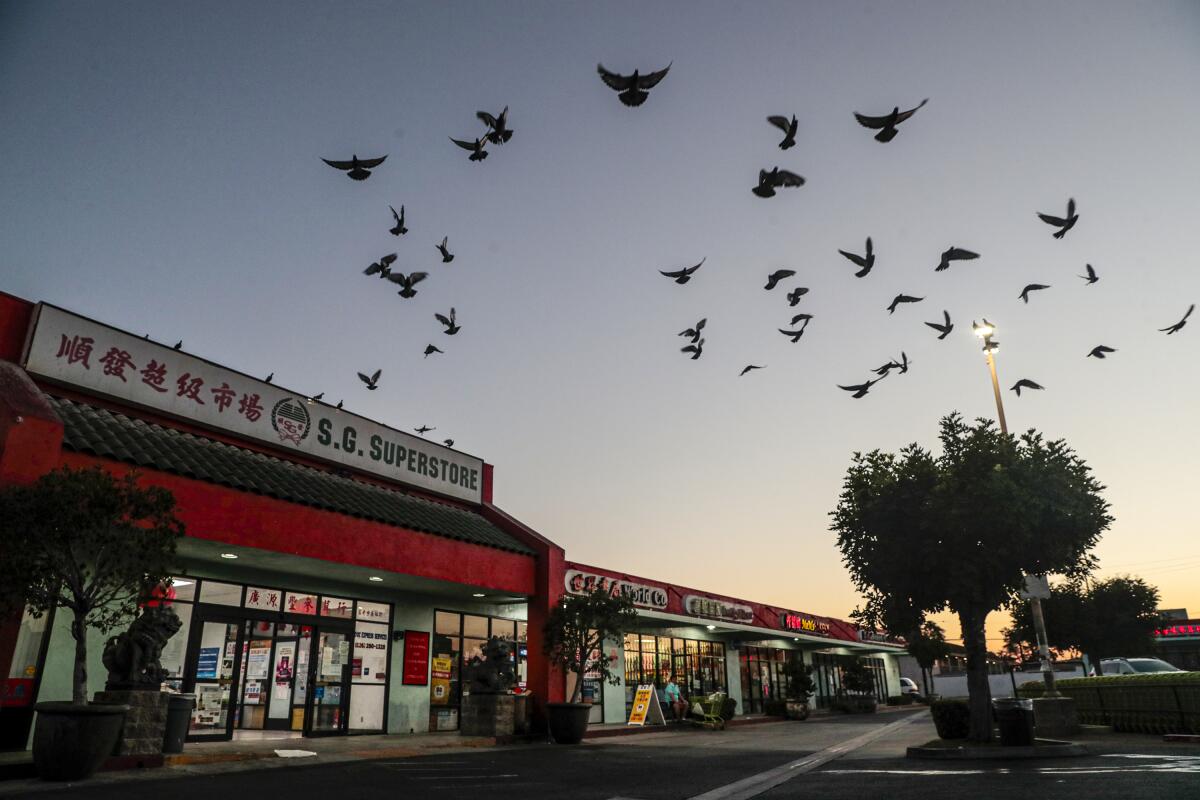
- Share via
Green onion pancakes and steamed pork buns individually wrapped in plastic at the 99 Ranch hot bar. A wheeled robot serving dim sum at Longo Seafood. Masks hanging off the ears of the Chinese millennials who smoke and play cards outside Boba Ave 8090 in San Gabriel.
The new normal in the east San Gabriel Valley is here, and things may never be the same along Valley Boulevard, a vibrant commercial corridor that joins the four majority-Asian cities of Alhambra, Monterey Park, Rosemead and San Gabriel.
Over the last decade, Chinese investment has transformed the area into an internationally known tourist area, and Valley Boulevard has become a kind of bellwether for Chinese investment in Southern California. Its fortunes can rise and fall according to the ups and downs of the U.S. relationship with China, and in the past, the region’s internationally diversified economy has helped it weather recessions and housing market crashes.
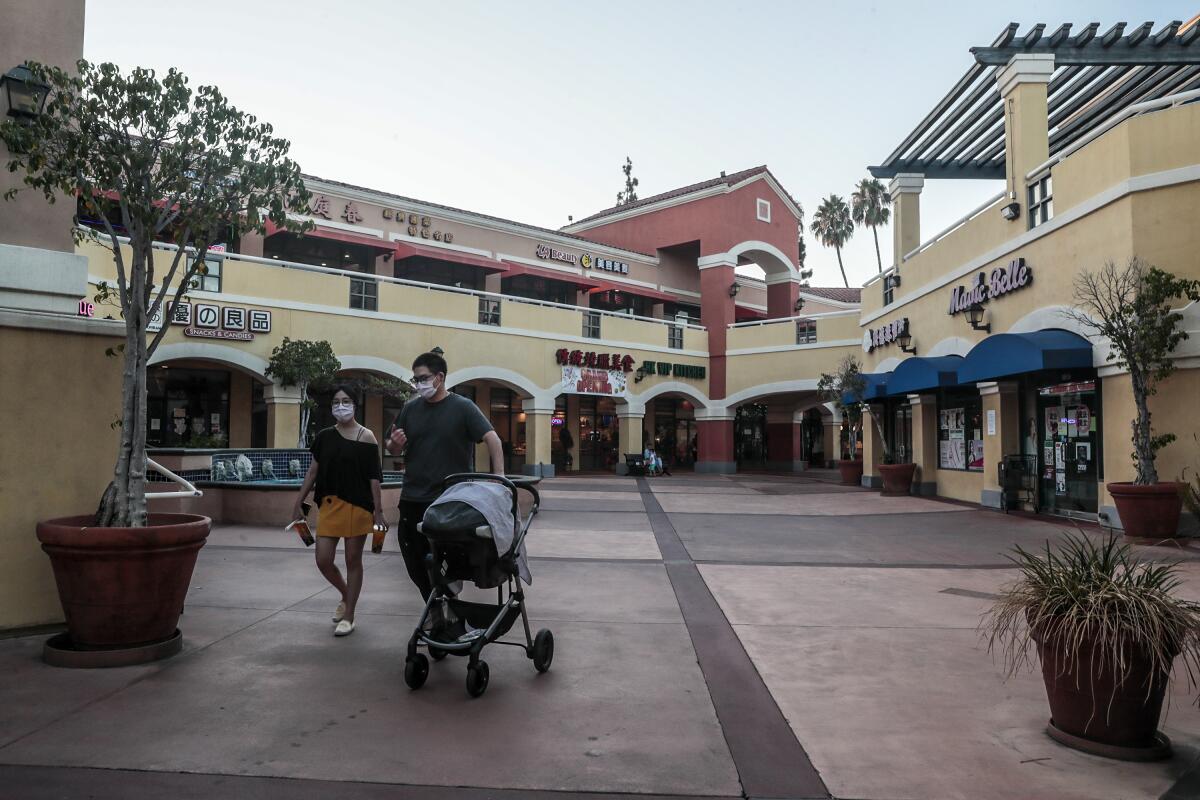
But the pandemic was an international crisis, and when it hit, tourism and foreign direct investment to California plummeted. Los Angeles County saw just around 102,000 visitors from China in 2020, a precipitous fall from a high of 1.2 million in 2019, according to the Los Angeles Tourism and Convention Board.
Chinese direct investment in California in 2020 fell to around $3 billion from a 2016 high of nearly $16 billion, according to Rhodium Group, which tracks major foreign investments in the U.S. Chinese tourists spent $693 million in Los Angeles County in 2020, down from $3.9 billion in 2019.
In the San Gabriel Valley, hospitality businesses, including hotels and restaurants, were hit hardest. Business owners lost almost a fifth of their payroll in 2020. In May of last year, unemployment in the region of 1.8 million people reached a high of 20.7%, according to a report by the San Gabriel Valley Economic Partnership. Tour bus companies, travel agencies and restaurants struggled to find new sources of revenue.
There are some signs of a recovery around the San Gabriel Valley. Unemployment has fallen to a more manageable 9.7%. Multiple hotels and residential complexes are under construction along Valley Boulevard — San Gabriel has 277,376 square feet of new retail space on the way. Home prices are still rising throughout the region. And at Focus Plaza in San Gabriel this week, I had to circle three times before I could find a good spot.
“New businesses have replaced those that went out of business, and some are reemerging. It’s a bit of a weird limbo time, but overall, there’s a feeling of optimism,” said San Gabriel Councilmember Jason Pu.
Focus Plaza, also known as San Gabriel Square, Chinese Disneyland and the Great Mall of China, is the largest strip mall on Valley Boulevard. The property can generate an estimated 40% of the city’s sales tax revenue on a good year. Pu says the gargantuan strip mall is experiencing more vacancies than usual, but measures such as outdoor dining, masking and online delivery have helped keep people in business.
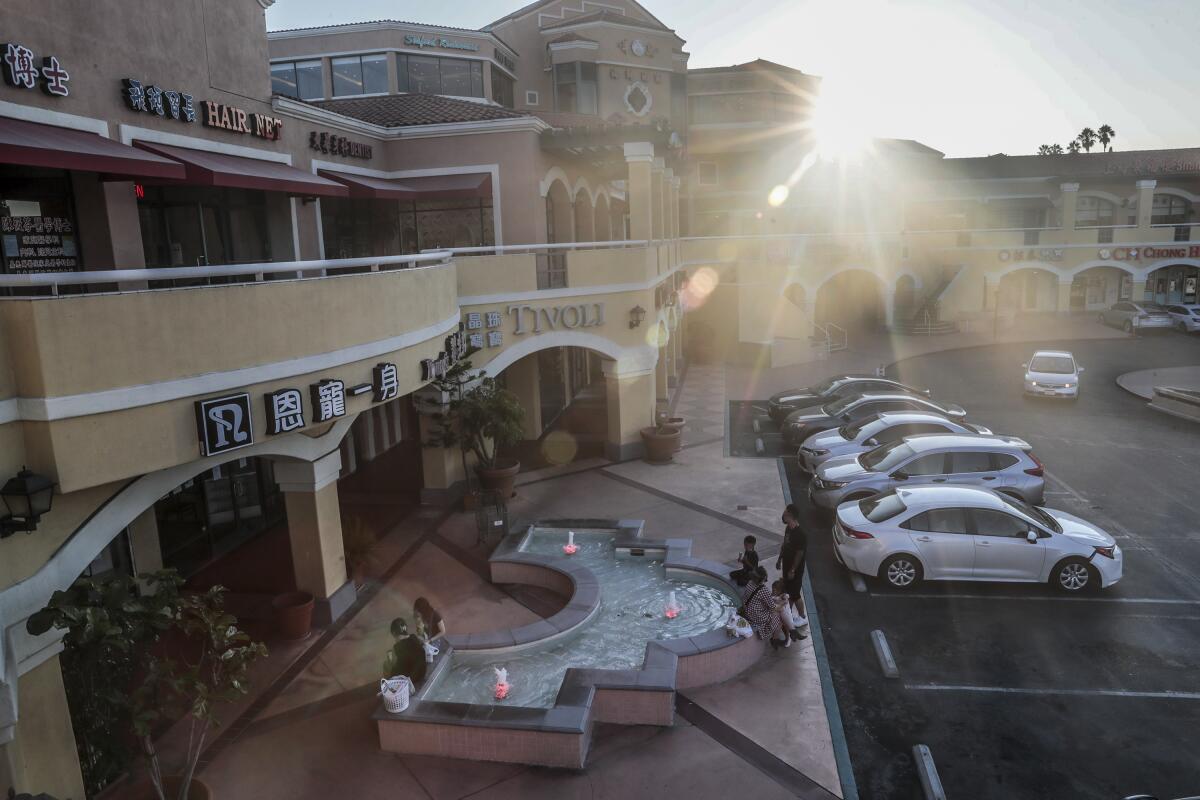
Vaccinations have been key, Pu said. More than 80% of eligible people are vaccinated in San Gabriel. And outdoor dining helped keep many restaurants afloat. And even before the pandemic, many business owners had already switched to contactless ordering and QR code menus to cater to the tastes of Chinese tourists and millennials. Masks and face shields are commonplace, though there still is a vocal minority that refuses to wear them, Pu said.
The sharp decline in Chinese tourism — and occupancy rates in San Gabriel hotels — was accompanied by a multimillion-dollar decline in transit occupancy tax revenues, Pu said. But a similarly sharp increase in online retail sales tax revenue has helped offset many of the losses.
“People are still struggling, and things aren’t back to normal by any means,” Pu said. But there’s a sense that the worst of it is over, he said.
At Hing Wa Lee Jewelers in Focus Plaza, they can no longer rely on a steady stream of tour buses dropping off Chinese visitors at their doorstep. Owner and Chief Executive David Lee says tourists used to make up about 40% of the shop’s business — now they account for around 15% of sales.
But the outlook isn’t all bad, Lee said. He says luxury purchases have remained strong during quarantine conditions, and he has seen more local buyers than ever before. Chinese tourists used to buy brands such as Swarovski, Vacheron Constantin and Rolex en masse, forcing him to stock products in bulk at certain price points, but now inventory is little bit more predictable and stable.
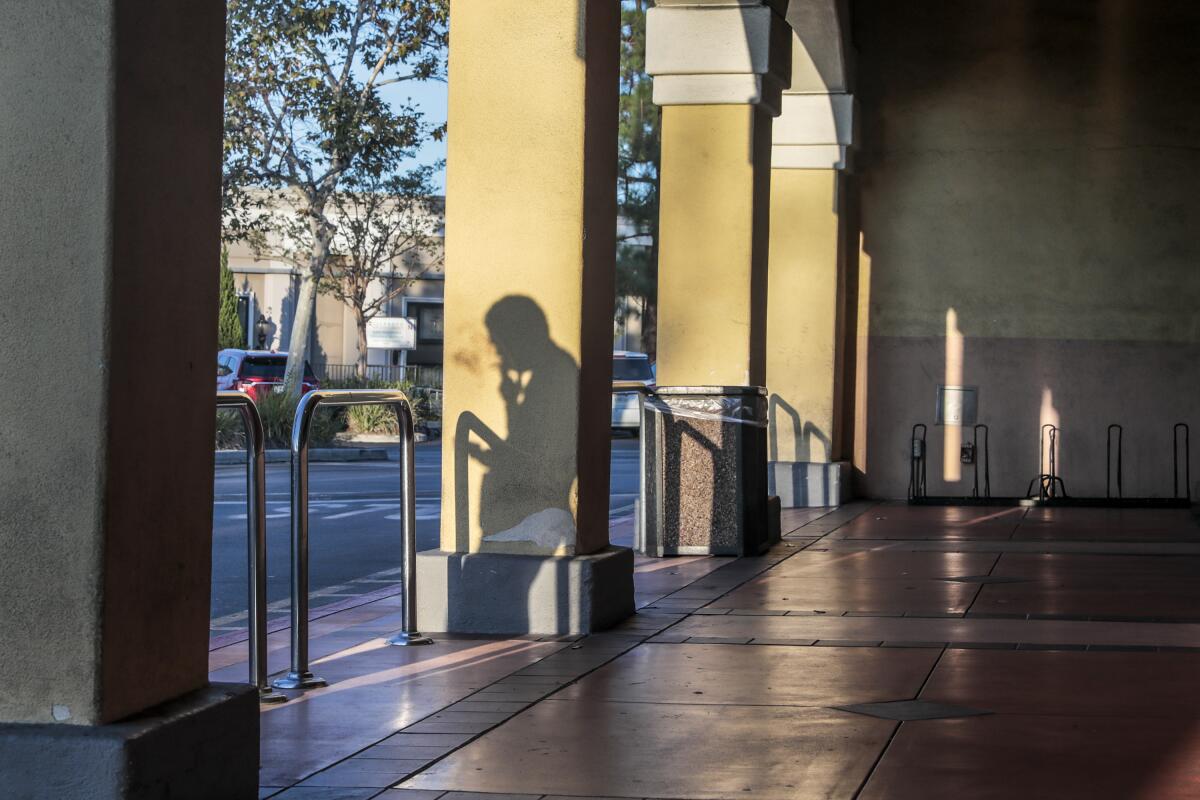
His only concern is whether normality will return, and when.
“Now there’s the Delta variant,” he said. “Later on, is there going to be another variant? We can’t really go back to normal.”
The Los Angeles Tourism and Convention Board projects that tourism will not return to pre-pandemic levels until at least 2024 or 2025. But San Gabriel Valley hotels are more than 70% occupied, according to a June report by the board. Pu says that even before the pandemic, the hotels were taking steps to shed their reliance on Chinese tourism revenues, cultivating tourism from within California and beyond.
For smaller-business owners, the outlook is more uncertain. Martin Chang, owner of Health Food City in Focus Plaza, said he is planning to hold onto his pharmacy until the end of the year, and then the business will try to recalibrate.
“It’s been hard. It’s still hard now,” he said. “We are just hoping we will be able to see tomorrow.”
More to Read
Sign up for Essential California
The most important California stories and recommendations in your inbox every morning.
You may occasionally receive promotional content from the Los Angeles Times.

